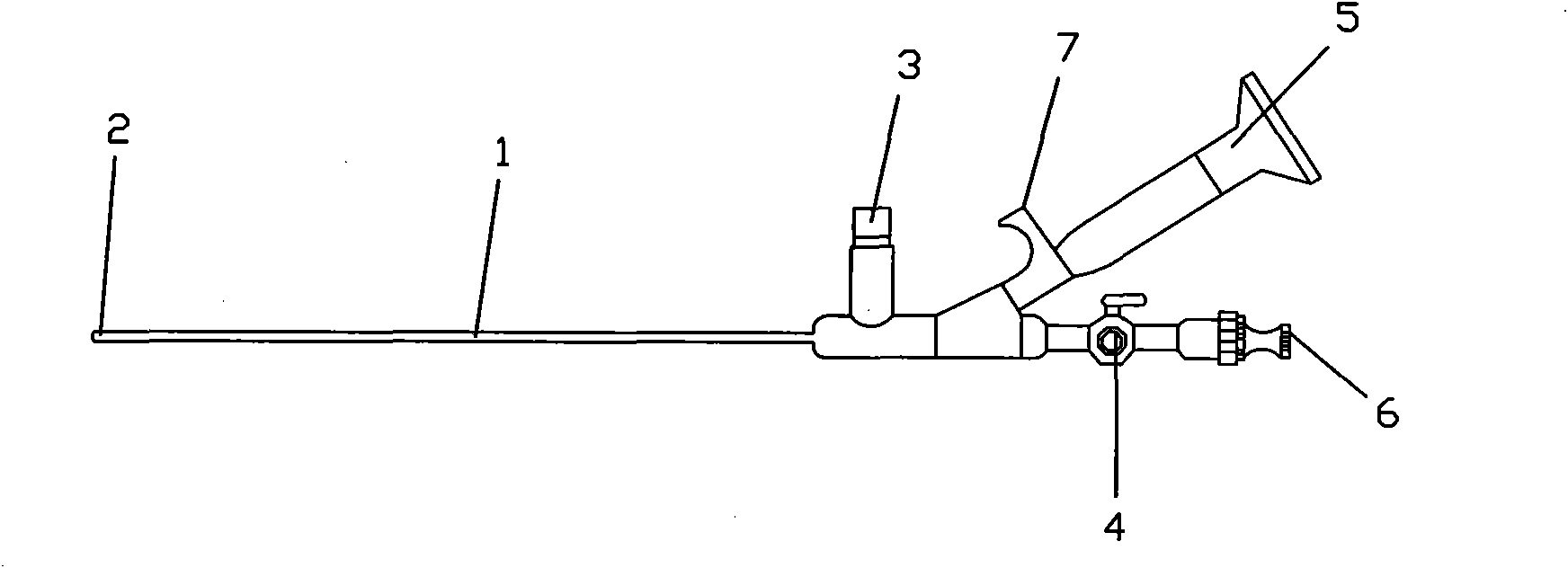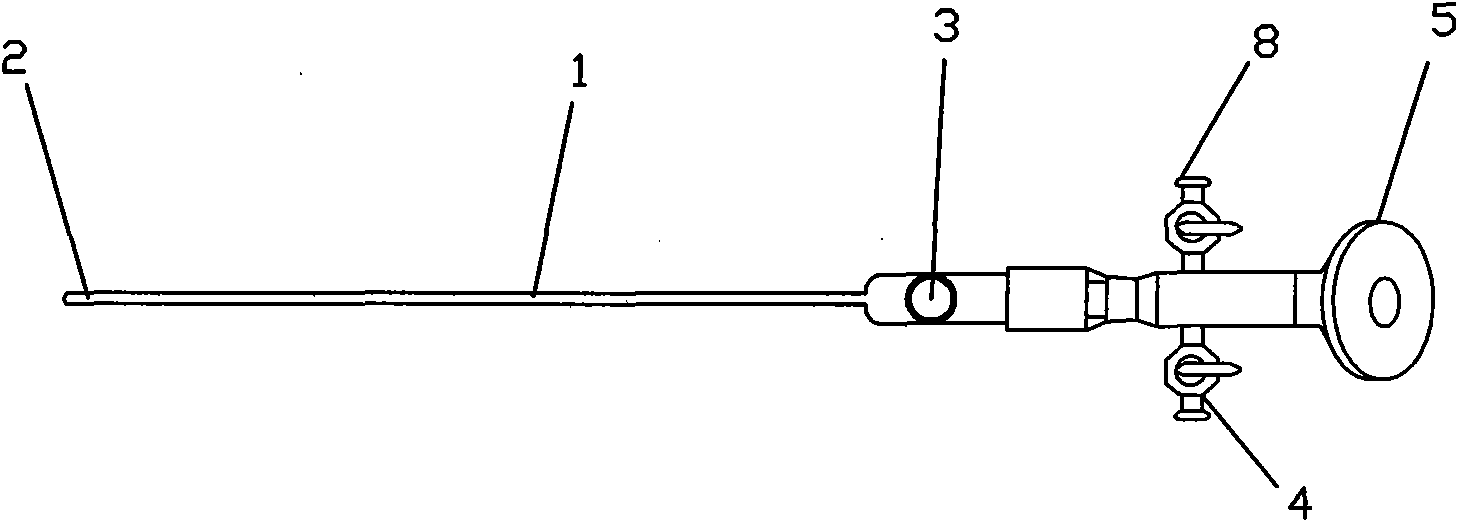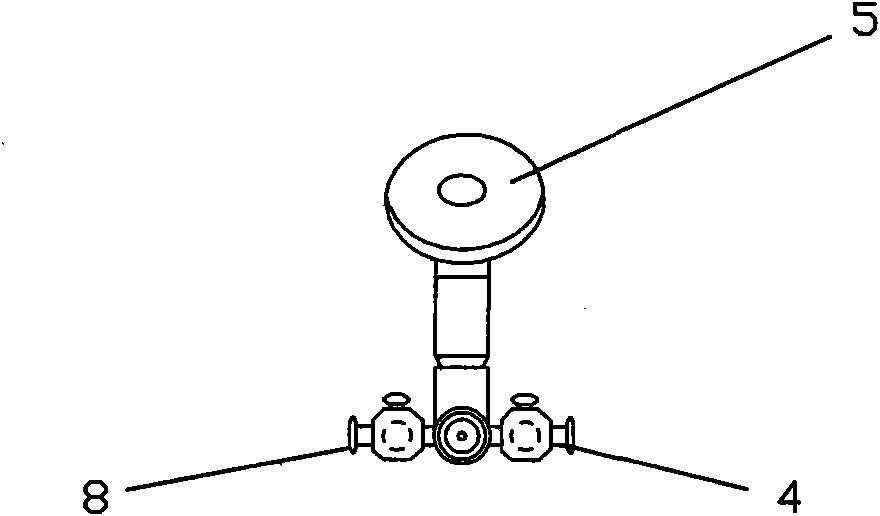Choledochoscope for removing calculi
A stone mirror and biliary tract technology, applied in the field of biliary stone mirror, can solve the problems of high reoperation rate, low stone removal efficiency, high residual stone rate, etc., and achieve the effect of simple stone removal operation, wide application range and high stone removal efficiency
- Summary
- Abstract
- Description
- Claims
- Application Information
AI Technical Summary
Problems solved by technology
Method used
Image
Examples
specific Embodiment approach 1
[0025] refer to figure 1 , figure 2 and image 3 , the biliary stone removal mirror includes a mirror body 1, the first end of the mirror body 1 forms a mirror tip 2, and the second end of the mirror body 1 is connected with a cold light source interface 3, a water inlet interface 4, a water outlet interface 8, a camera interface 5 and The operation channel entrance 6, the rear part of the mirror body 1 is a hollow cavity structure, and the hollow cavity structure communicates with the cold light source interface 3, the water inlet interface 4, the water outlet interface 8, the camera interface 5 and the operation channel inlet 6.
[0026] refer to figure 1 , figure 2 and image 3 , in the present invention, the operation channel entrance 6 is on the same straight line as the hollow cavity structure, and the stone-taking forceps can clamp stones through the operation channel entrance 6 or use forceps to crush the stones (most hepatic bile duct stones are soft and easy to...
specific Embodiment approach 2
[0028] refer to Figure 4 , the principle and structure of this specific embodiment are basically the same as those of specific embodiment 1, the difference is that this specific embodiment only has the water inlet port 4 and does not have the water outlet port 8 .
specific Embodiment approach 3
[0029] refer to Figure 5 , the principle and structure of this embodiment are basically the same as those of Embodiment 1, the difference is that the length of the mirror body of this embodiment is 38cm, which is mainly used for open surgery, and the front end of the mirror body 1 is a 15° arc on the right side. The shape is curved, and it can better deal with the abnormal stones of the biliary tract and the complex structure of the bile duct.
PUM
 Login to View More
Login to View More Abstract
Description
Claims
Application Information
 Login to View More
Login to View More - R&D
- Intellectual Property
- Life Sciences
- Materials
- Tech Scout
- Unparalleled Data Quality
- Higher Quality Content
- 60% Fewer Hallucinations
Browse by: Latest US Patents, China's latest patents, Technical Efficacy Thesaurus, Application Domain, Technology Topic, Popular Technical Reports.
© 2025 PatSnap. All rights reserved.Legal|Privacy policy|Modern Slavery Act Transparency Statement|Sitemap|About US| Contact US: help@patsnap.com



